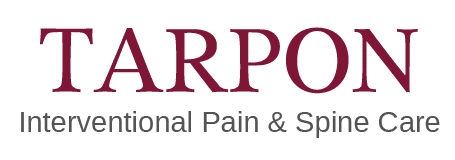
Nearly everyone experiences some form of back pain during the course of their lives. Most back problems can be classified as mild to moderately painful, and they can be treated with rest, hot or cold compression, and/or medication. They gradually subside over time.
However, if you feel a sharp, persistent pain in your spine that radiates down your lower back, you may be suffering from a herniated disc – which is a condition that may require more invasive treatment.
What Is a Herniated Disc?
To explain a herniated disc requires a brief anatomy lesson. Your spine is composed of 26 bones called vertebrae. Each set of two adjacent vertebrae is separated by a soft, cushiony disc that is composed of an outer layer of tough cartilage and an inner section of softer, jellylike material. It is these discs that enable you to twist and move your back in various directions.
As you age, these discs dehydrate and can show the effects of wear and tear. The cartilage stiffens and, as a result, the discs become susceptible to injury.
For example, a disc may move out of place and start irritating surrounding nerves. A crack in the outer layer of cartilage can allow some of the softer inner material to leak out from the disc, which can also irritate the nerves.
This is what is known as a herniated – or ruptured or slipped – disc, and it can cause extreme back pain.
Not to be confused with a bulging disc, in which the outer layer of the disc bulges out evenly, most herniated discs protrude farther and are more likely to irritate nerve roots. Also, they tend to occur in the lower back (lumbar spine), although they can also occur in the neck (cervical spine).
Because they are most often the result of natural, age-related deterioration of the spine, herniated discs are classified as a degenerative spine condition. The damage typically originates with the development of a bulging disc and, if untreated, progresses from there.
Symptoms of Herniated Discs
The most common symptoms of a herniated disc include:
Arm or Leg Pain
If located in the lower back, a herniated disc will typically produce the most intense pain in the buttocks, thigh, and calf. It may also involve part of the foot.
If located in the neck, a herniated disc will typically result in pain in your shoulder and arm. The pain may shoot down the length of the arm or leg when you cough, sneeze, or move your spine into a certain position.
Numbness or a Tingling Sensation
This often occurs in the area of the body served by the affected nerves. Nerves are all along the spinal column, and they constantly send messages between the brain and the rest of the body.
Muscle Weakness
This may cause you to have difficulty walking, gripping, holding, or lifting.
No Symptoms
You may even have a herniated disc without knowing it. Sometimes, they show up on X-rays and MRIs of people who are being treated for something completely different.
Treatment for Disc Herniations
Herniated discs are often treated using noninvasive, conservative methods, such as pain medication and physical therapy. However, if these measures fail to relieve symptoms, spinal surgery may be required, depending on the severity of your condition.
A discectomy – in which the entire disc or the portion that is causing pressure on the root nerve is removed – is the most common surgical procedure for a herniated disc in the lumbar region.
Orthopedic Surgeons in Texas
Tarpon Orthopedics – your sports medicine, spine, and pain specialists – can diagnose a herniated disc and devise an appropriate treatment plan for you.
Call us at 9725961059 or fill out our online form to schedule an appointment. We look forward to helping you enjoy a more active, pain-free lifestyle once again.
Author Alex Hirsch
